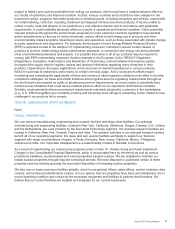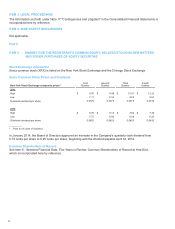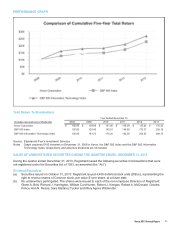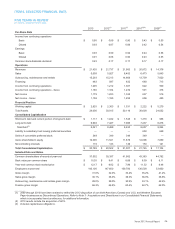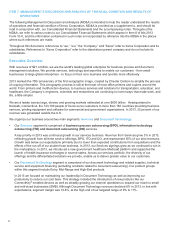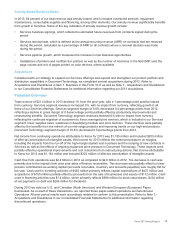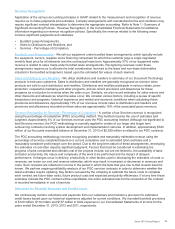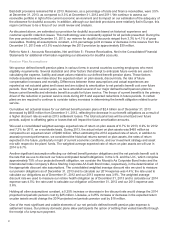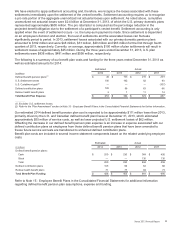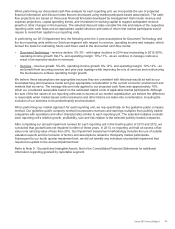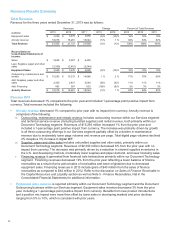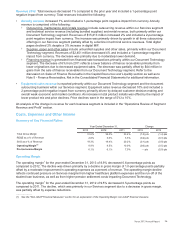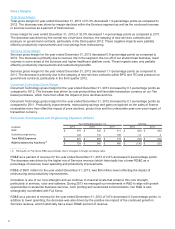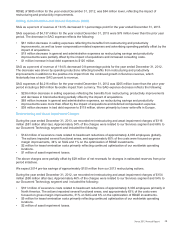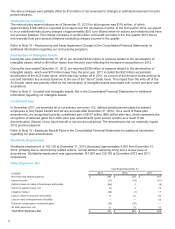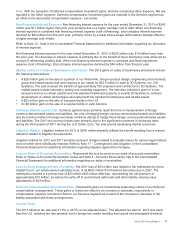Xerox 2013 Annual Report Download - page 47
Download and view the complete annual report
Please find page 47 of the 2013 Xerox annual report below. You can navigate through the pages in the report by either clicking on the pages listed below, or by using the keyword search tool below to find specific information within the annual report.
Revenue Recognition
Application of the various accounting principles in GAAP related to the measurement and recognition of revenue
requires us to make judgments and estimates. Complex arrangements with nonstandard terms and conditions may
require significant contract interpretation to determine the appropriate accounting. Refer to Note 1 - Summary of
Significant Accounting Policies - Revenue Recognition, in the Consolidated Financial Statements for additional
information regarding our revenue recognition policies. Specifically, the revenue related to the following areas
involves significant judgments and estimates:
• Bundled Lease Arrangements,
• Sales to Distributors and Resellers, and
• Services - Percentage-of-Completion.
Bundled Lease Arrangements - We sell our equipment under bundled lease arrangements, which typically include
the equipment, service, supplies and a financing component for which the customer pays a single negotiated
monthly fixed price for all elements over the contractual lease term. Approximately 37% of our equipment sales
revenue is related to sales made under bundled lease arrangements. Recognizing revenues under these
arrangements requires us to allocate the total consideration received to the lease and non-lease deliverables
included in the bundled arrangement, based upon the estimated fair values of each element.
Sales to Distributors and Resellers - We utilize distributors and resellers to sell many of our Document Technology
products to end-user customers. Sales to distributors and resellers are generally recognized as revenue when
products are sold to such distributors and resellers. Distributors and resellers participate in various rebate, price-
protection, cooperative marketing and other programs, and we record provisions and allowances for these
programs as a reduction to revenue when the sales occur. Similarly, we also record estimates for sales returns and
other discounts and allowances when the sales occur. We consider various factors, including a review of specific
transactions and programs, historical experience and market and economic conditions when calculating these
provisions and allowances. Approximately 10% of our revenues include sales to distributors and resellers and
provisions and allowances recorded on these sales are approximately 19% of the associated gross revenues.
Revenue Recognition for Services - Percentage-of-Completion - A portion of our Services revenue is recognized
using the percentage-of-completion (POC) accounting method. This method requires the use of estimates and
judgment. Approximately 3% of our Services revenue uses the POC accounting method. Although not significant to
total Services revenue, the POC methodology is normally applied to certain of our larger and longer term
outsourcing contracts involving system development and implementation services. In addition, approximately $340
million of our Accounts receivable balance at December 31, 2013 of $2,929 million is related to our POC contracts.
The POC accounting methodology involves recognizing probable and reasonably estimable revenue using the
percentage of services completed based on a current cumulative cost to estimated total cost basis and a
reasonably consistent profit margin over the period. Due to the long-term nature of these arrangements, developing
the estimates of cost often requires significant judgment. Factors that must be considered in estimating the
progress of work completed and ultimate cost of the projects include, but are not limited to, the availability of labor
and labor productivity, the nature and complexity of the work to be performed and the impact of delayed
performance. If changes occur in delivery, productivity or other factors used in developing the estimates of costs or
revenues, we revise our cost and revenue estimates, which may result in increases or decreases in revenues and
costs. Such revisions are reflected in income in the period in which the facts that give rise to that revision become
known. We perform ongoing profitability analysis of our POC services contracts in order to determine whether the
latest estimates require updating. Key factors reviewed by the company to estimate the future costs to complete
each contract are future labor costs, future product costs and expected productivity efficiencies. If at any time these
estimates indicate the POC contract will be unprofitable, the entire estimated loss for the remainder of the contract
is recorded immediately in cost of services.
Allowance for Doubtful Accounts and Credit Losses
We continuously monitor collections and payments from our customers and maintain a provision for estimated
credit losses based upon our historical experience adjusted for current conditions. We recorded bad debt provisions
of $120 million, $119 million and $157 million in SAG expenses in our Consolidated Statements of Income for the
years ended December 31, 2013, 2012 and 2011, respectively.
Xerox 2013 Annual Report 30




